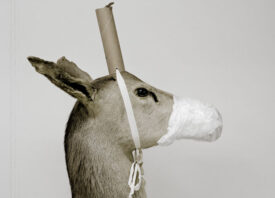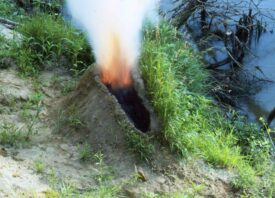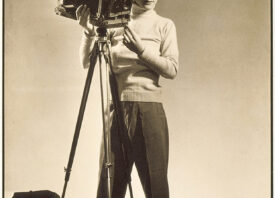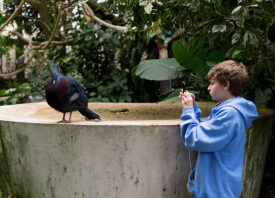Search this site
The Unseen Collection at the National Museum of Natural History

USNM Bird Collection, Department of Vertebrate Zoology, National Museum of Natural History, Smithsonian Institution © Chip Clark, 1992
“All the pretty, cushy places on earth have already been studied,” said photographer Chip Clark with a laugh in conversation with Smithsonian’s National Museum of Natural History, where he worked from 1973 until his death in the summer of 2010. He was on the ground with scientists when they collected samples and data, roughing it in tents, sharing space with bugs and critters of all kinds.
Clark’s professional dedication didn’t stop when he came back home; over the course of the second half of his career at the Smithsonian, he created an astonishing and historic collection of images made behind-the-scenes in the archives of the National Museum of Natural History, where about 99% percent of the museum’s holdings remain protected from the general public.
The images Clark left behind, suggests Smithsonian.com’s Maya Wei-Haas, who spoke directly with Assistant Director for Collections Carol Butler, provide a glimpse into the private universe where few, highly-qualified feet are permitted to trod. What’s on view at the museum at any given time represents only the tip of a colossal iceberg; countless items and specimens that were used to construct each and every exhibition, even if they were withheld from the final edit.
Clark witnessed the foremost experts in biology, anthropology, zoology, botany, and other fields of natural history interacting with the most valuable set of resources at their disposal. What’s precious about the photographer’s contribution, explains Butler, is that at any given moment, a species might vanish from the face of the earth; what’s left in the archives might represent the last of an extinct animal, or in the era of climate change, a submerged or otherwise destroyed community or ecosystem.
Clark’s work at the museum chronicles not only the evolution of the sciences—there are technologies available now that were not in existence when he first started—but also the changing landscape of photography. In the 1970s, he used Kodachrome color slide and Ilford black and white film, but by 2005, he had been, as he put it, “dragged kicking and screaming into the digital age.”
It’s also worth noting the incredible artistry that went into making these images. Clark didn’t simply capture the archives as they were on any given day but helped stage them not only to be aesthetically memorable but also to contain a wealth of information for generations to come. Some snaps took up to eight hours to get right.

Department of Anthropology Collections, National Museum of Natural History, Smithsonian Institution
Photo © Chip Clark, 2009

U.S. National Herbarium, Department of Botany, National Museum of Natural History, Smithsonian Institution Photo © Chip Clark, 1998

USNM Entomology Collections, Department of Entomology, National Museum of Natural History, Smithsonian Institution Photo © Chip Clark, 2006

Department of Paleobiology Collections, National Museum of Natural History, Smithsonian Institution
Photo by Chip Clark © Chip Clark, 2006

U.S. National Herbarium, Department of Botany, National Museum of Natural History, Smithsonian Institution © Chip Clark, 2007

National Invertebrate Collections, Department of Invertebrate Zoology, National Museum of Natural History, Smithsonian Institution © Chip Clark, 2009

National Mineral Collection, Department of Mineral Sciences, National Museum of Natural History, Smithsonian Institution © Chip Clark, 2009

Marine Mammals Collection, Department of Vertebrate Zoology, National Museum of Natural History, Smithsonian Institution © Chip Clark



